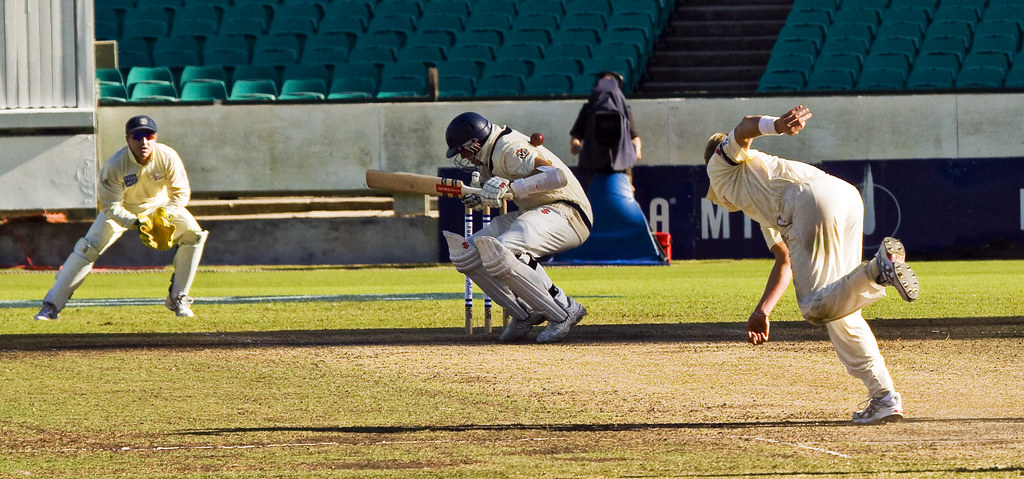

The 1980s were the most glorious years of West Indies cricket. The Caribbean side was a formidable one with a strong top and middle order. But it was their devastating bowlers, who made the team a force to reckon with. Michael Holding, Andy Roberts, Colin Croft, Joel Garner and Malcolm Marshall were the five bowlers who were known to instill fear in the batter’s mind with their fiery bowling. Each of these bowlers could routinely clock 150 km/hr with the perfect line and length.
During the 1980s, England and West Indies were involved in several memorable matches and the two sides would cook a competitive match. The Windies fielders would encourage their pacers by saying, “Come on! Let him have some chin music.” This is where the term chin music was born. It refers to the steamy bouncers bowled by the Windies bowlers that were targeted at the batter’s chin or throat.

A delivery that gives chin music to the batter is difficult to bowl as it rises quickly off the pitch at a short length. Unless the batter has quick legs, it is difficult to hit a shot on such a ball. The safest thing is to leave the ball. It is important to remember that chin music is not just one delivery. Repeated deliveries targeted at the batter’s chin is called chin music. Hence, a bowler needs to be very consistent in order to mount the pressure of chin music on the batter. Moreover, the room for margin is so less, that if uncontrolled, it can result in a wide, go over the keeper’s head for free runs and might even be called a no ball if the bowler has bowled two illegal bouncers.
In modern cricket, Mitchell Johnson is widely credited for being the best proponent of chin music. Other notables bowlers include Dale Steyn, Lasith Malinga and James Anderson.





